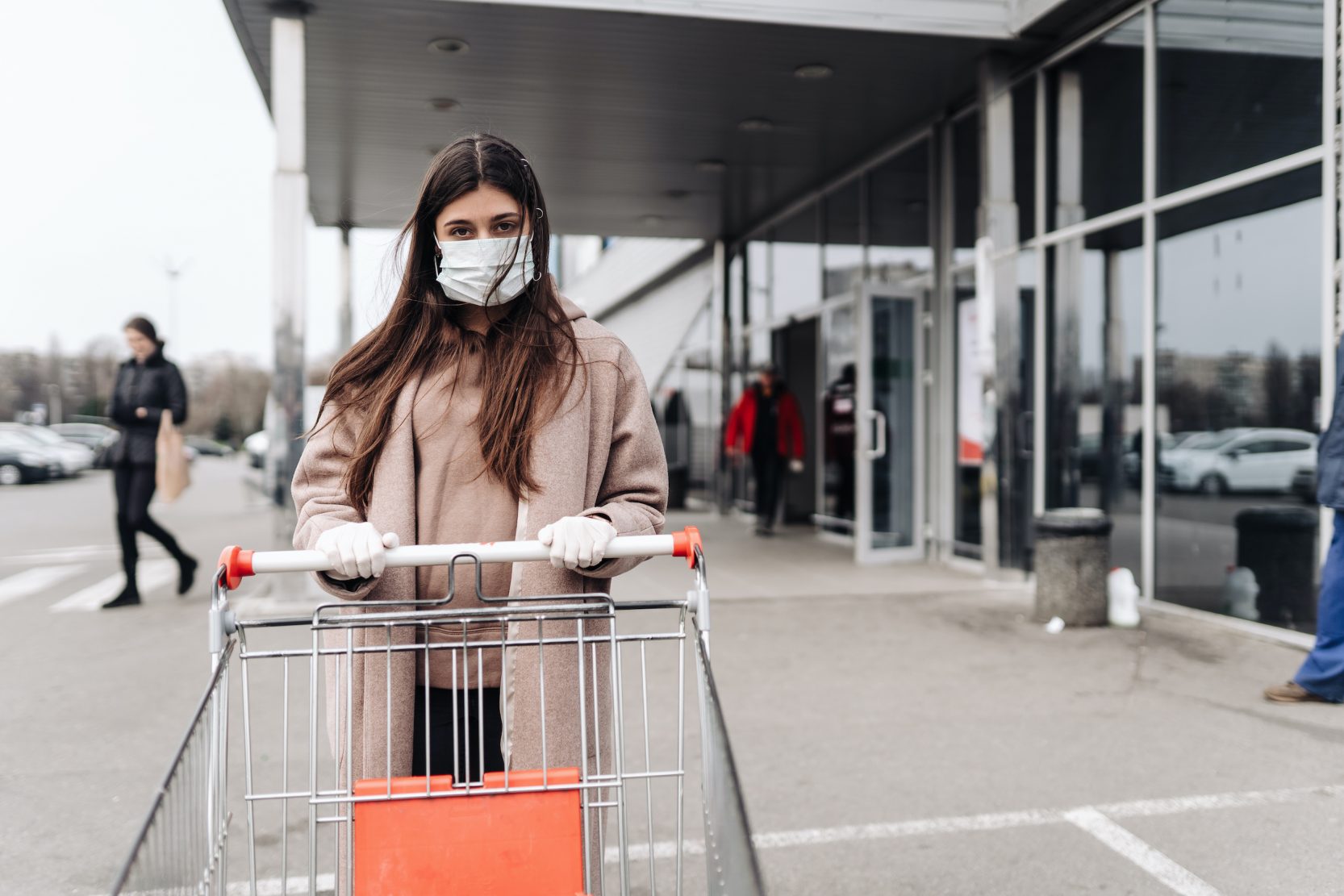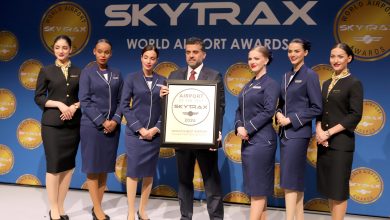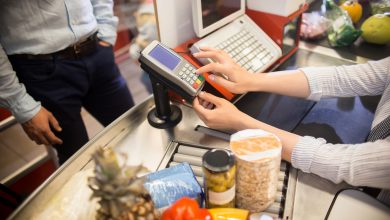Time: 5 Things We’ll Miss About the Pandemic When It Ends
مجلة تايم: 5 أشياء سنفقدها بعد رحيل كورونا عن عالمنا
Time
When the COVID-19 pandemic vanishes into history (which, to be clear, isn’t happening yet), no one in the world will mourn its passing. But that’s not to say every single change we’ve made to accommodate the crisis has been a bad thing. Here are five COVID-related practices we’ve learned to live with—and that I’ll miss if they go.
Wearing masks on public transportation
Public transportation may be environmentally friendly, but it’s no friend to those of us who don’t want to get sick. According to the American Public Transportation Association, in 2019, the last year before the pandemic shut down much of the world, 34 million Americans boarded public transportation each weekday—more than 9 billion each year. In big cities especially, that kind of crowding makes subways, buses, trains, and light rails petri dishes for germs. Mandatory masking on public transportation during the pandemic helped keep COVID-19 under control in those settings—and it could do the same for more common respiratory illnesses like colds and flu in the fall and winter. Now that we’ve gotten into the masking on public-transit habit, let’s keep it up.
Curbside pickup
What could be easier than curbside pick-up? Just place your order online, cruise to the store, and grab your package, which will be waiting for you outside. According to a study by Salesforce, 39% of U.S. retail executives introduced curbside pickup at their companies during the pandemic, and of those, 74% say they will continue the practice after it passes. That’s a boon not just for consumers, but for marketers themselves: According to a study by eMarketer, an independent analysis firm, so-called “click and collect” sales leapt to $72.5 billion in 2020, double the total before the pandemic. Cash for the seller and convenience for the buyer—without having to interact with other people and their germs.
The rise of telehealth
My Tuesday nights are busy. As a member of a weekly psychotherapy group that meets from 6:45 to 8:15 p.m., I need to make a near-40-block schlep from my home to the doctor’s office and back at a time of day when I have finished work and would just as soon be staying around the house. Switching from in-person to group Zoom sessions has made that experience a whole lot easier. According to a study by McKinsey & Company, telehealth visits—for both physical and psychological care—have increased 38-fold since the start of the pandemic. Early in the pandemic, one survey of members of the American Psychiatric Association found that before COVID-19 hit, only 2% of psychiatrists reported using teletherapy with their patients most of the time. Once COVID-19 ran riot, that figure jumped to 84%. The telehealth door has been blown wide open as a result of the pandemic—making health care easier for both doctors and patients. I hope it doesn’t close afterwards.
The end of the handshake
I don’t know you, but if we ever had the opportunity to meet, I’m sure I’d like you. But if it’s all the same to you, let’s eliminate the handshake from that first hello. The human hand has an average of 150 different species of bacteria living on it at any moment, according to one study from the University of Colorado, Boulder—and that research was conducted before the COVID-19 virus joined the pathogen list. Yes, the coronavirus is principally spread by air, but early in the pandemic, before the transmissibility routes were known, the handshake fell out of vogue. I say keep it that way. COVID-19 or not, colds and flu are transmissible by touch. If you must touch hands to feel like you’ve exchanged a real greeting, the Cleveland Clinic recommends the fist bump. One 2014 study found that the transfer of germs is “dramatically reduced” when bumping a cool, dry fist replaces clasping a warm, damp hand.
No more coming to work sick
In the Before Times, it was something of a badge of honor to come to work even when you were feeling sick. The sneezy, hacking worker who nonetheless sucked it up and came into the office was seen as an especially dedicated member of the team. One 2019 study from the human resources organization Accountemps found that 90% of employees surveyed admitted that they showed up for work even when they were exhibiting symptoms of a cold or flu. About half of them said they simply had too much work to do, and 40% said they didn’t want to use up their sick days unless they absolutely had to.
Thankfully, those days are over. Clearly, the office is a no-go zone if you test positive for COVID-19, but those play-it-safe practices increasingly apply to other more common illnesses. The U.S. Centers for Disease Control and Prevention continues to recommend staying home with a cold, flu, or other illness—to say nothing of COVID-19. So-called “presenteeism” —showing up to work even when you are sick—may not only earn you glares from co-workers worried about catching what you’ve got, but it also hurts a company’s bottom line. According to the Adecco Group, a global human resources organization, presenteeism costs U.S. and European businesses an average of $45 billion per year, due to low productivity from workers who are on the job even when they are too sick to work effectively. Feel sick? Stay in bed. Your coworkers—and employer—will thank you.
الشرق
عندما يرحل فيروس كورونا عن عالمنا، ويصبح أثرا بعد عين، وتطوى صفحته، -وهو ما لم يحدث بعد- فليس في العالم أحد سيحزن على رحيله، ولكنّ فراقه، لا يعني أنّ التغييرات التي قمنا بها للتكيف مع الوباء كانت أمرا سيئا!
في مقال نشرته مجلة “تايم” (Time) الأميركية، ونقلته الجزيرة نت، تناول الكاتب جيفري كلوغر 5 ممارسات فرضتها ضرورات الوقاية من انتشار وباء كوفيد-19 قال إنه سيفتقدها بعد زوال الوباء لأنها حسبما يرى ليست سيئة، كارتداء الأقنعة في وسائل النقل العام، والتسوق عبر الإنترنت، وازدياد خدمة الرعاية الصحية عن بعد، وانتهاء المصافحة باليد، ووقف المجيء للعمل مع المرض.
وفي ما يلي 5 ممارسات متعلقة بالوباء تعلمنا التعايش معها ويرى “كلوغر” أنها ممارسات مفيدة تقي من انتشار أمراض أخرى غير كوفيد-19، وقال “سأفتقدها إذا اختفت”، مؤكدا أنها ينبغي أن تستمر حتى بعد زوال الوباء:
ارتداء الأقنعة في وسائل النقل العام
وفقا للجمعية الأميركية للنقل العام، فإنه في عام 2019 -وهو العام الأخير قبل أن يؤدي الوباء لإغلاق جزء كبير من العالم- كان 34 مليون أميركي يستقلون وسائل النقل العام كل يوم من أيام الأسبوع، أكثر من 9 مليارات كل عام.
وقد ساعد ارتداء الأقنعة الإلزامي في وسائل النقل العام أثناء الجائحة على إبقاء كوفيد-19 تحت السيطرة في تلك البيئات، ويمكن أن يفعل الشيء نفسه بالنسبة للأمراض التنفسية الأكثر شيوعا، مثل نزلات البرد والإنفلونزا في فصلي الخريف والشتاء، الآن وقد أصبح ارتداء الأقنعة في وسائل النقل عادة دعونا نحافظ عليها.
التسوق عبر الإنترنت
وفقا لدراسة أجرتها شركة “” (Salesforce)، قدم 39% من المديرين التنفيذيين للبيع بالتجزئة في الولايات المتحدة الشراء عبر الإنترنت في شركاتهم خلال الوباء، ومن بين هؤلاء يقول 74% إنهم سيواصلون هذه الممارسة بعد زوال الوباء.
وهذه نعمة ليس فقط للمستهلكين ولكن للمسوقين أنفسهم وفقا لدراسة أجرتها “” (eMarketer)، وهي شركة تحليل مستقلة، فقد قفزت ما تسمى مبيعات “انقر واحصل” إلى 72.5 مليار دولار في عام 2020، أي ضعف الإجمالي قبل الوباء، وهذا يوفر المال للبائع والراحة للمشتري دون الحاجة للاختلاط بالآخرين والجراثيم التي يحملونها.
تزايد خدمة الرعاية الصحية عن بعد
وفقا لدراسة أجرتها شركة (McKinsey) وشركاها زادت زيارات الرعاية الصحية عن بعد -البدنية والنفسية على حد سواء- بمقدار 38 ضعفا منذ بداية الوباء.
وفي وقت مبكر لظهور الوباء وجدت دراسة استقصائية لأعضاء الجمعية الأميركية للطب النفسي أنه قبل تفشي كوفيد-19 أفاد 2% فقط من الأطباء النفسيين باستخدامهم العلاج عن بعد مع مرضاهم معظم الوقت، وبمجرد تفشي الوباء قفز هذا الرقم إلى 84%.
وأدى ذلك إلى فتح باب الرعاية الصحية عن بعد على مصراعيه نتيجة لهذا الوباء، مما سهل الأمر على الأطباء والمرضى على حد سواء، آمل ألا يغلق بعد ذلك، يقول الكاتب كلوغر.
نهاية المصافحة اليدوية
وفقا لدراسة أجرتها جامعة كولورادو بولدر، فإن اليد البشرية لديها في المتوسط 150 نوعا مختلفا من البكتيريا التي تعيش فيها طوال الوقت، وهذه الدراسة أجريت قبل أن ينضم فيروس كوفيد-19 إلى قائمة مسببات الأمراض.
ويقول الكاتب “حافظوا على هذا المنحى”، إن كان كوفيد-19 أم لا فنزلات البرد والانفلونزا تنتقل عن طريق اللمس، وإذا كنت مضطرا للمس اليدين لتشعر وكأنك تبادلت تحية حقيقية فإن عيادة “كليفلاند” تنصح بضربة خفيفة بقبضة اليد، فقد وجدت دراسة أجريت عام 2014 أن نقل الجراثيم “ينخفض بشكل كبير” عند الضرب بقبضة باردة وجافة بديلا للمصافحة بيد دافئة ورطبة.
لا ذهاب للعمل مع المرض
قبل الوباء كان مجيء الشخص إلى العمل وهو مريض بمثابة وسام شرف له، كان ينظر للموظف الذي يأتي للعمل -حتى لو كان ذلك تملقا- وهو يعطس على أنه عضو مخلص ومتميز في فريق العمل.
ووجدت دراسة أجريت عام 2019 من منظمة الموارد البشرية “أكاونتامبس” أن 90% من الموظفين الذين شملهم الاستطلاع اعترفوا بأنهم ذهبوا للعمل حتى عندما كانت تظهر عليهم أعراض البرد أو الإنفلونزا، وحوالي نصفهم قالوا ببساطة إنه كان لديهم الكثير من العمل يودون القيام به، وقال 40% إنهم لا يريدون استنفاد أيام مرضهم ما لم يضطروا لذلك.
ووفقا لمجموعة أديكو (Adecco Group) -وهي منظمة عالمية للموارد البشرية- فإن المجيء للعمل مع المرض يكلف الشركات الأميركية والأوروبية ما متوسطه 45 مليار دولار سنويا، بسبب انخفاض إنتاجية العمال الذين يعملون حتى عندما يكونون مرضى جدا بحيث لا يمكنهم العمل بفعالية؟
هل تشعر بالمرض؟ الزم الفراش فإن زملاءك في العمل وصاحب العمل سيشكرونك.




